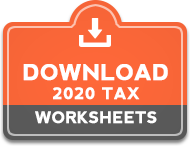
Splitting income with family can save meaningful tax dollars
January 28, 2023
The Canada Revenue Agency Announced Major Changes That Could Affect Your 2022 Taxes
February 8, 2023WHY DO WE NEED IT?
The company has to make sure it has enough money. To pay for things it needs like rent and payroll for it’s employees.
WHAT IS ACCOUNTING?
When a company makes money, it has to keep track of where that money came from and where it goes. This is called Accounting.
ACCRUAL ACCOUNTING
A method of accounting that records transactions when they happen, not when the money is received or paid.
CASH BASIS ACCOUNTING
A method of accounting that records transactions when the money is received or paid, not when they happen.
INCOME
Money you earn from doing work or selling something. Example: You sell cookies and make $20.
EXPENSES
Money you spend on things you need to run your business. Example: You buy ingredients to make cookies and it costs $10.
PROFIT
The money you have left over after you subtract your expenses from your income.
Example: You sell cookies for $20 and spend $10 on ingredients, so you have a profit of $10.
LOSS
When your expenses are more than your income.
Example: You sell cookies for $10 and spend $15 on ingredients, so you have a loss of $5.
ASSETS
Things you own that have value.
Example: You own a cookie jar that you use to sell cookies from.
LIABILITIES
Money you owe to others.
Example: You borrowed $50 from a friend to buy ingredients to make cookies.
EQUITY
The difference between your assets and liabilities.
Example: You own a cookie jar worth $70 and owe $50, so your equity is -$20.
REVENUE
The total amount of money coming into your business.
Example: You sell cookies for $20 and cupcakes for $15, so your revenue is $35.
ACCOUNTS PAYABLE
Money you owe to others for goods or services you’ve received but haven’t paid for yet.
ACCOUNTS RECEIVABLE
Money others owe you for goods or services you’ve provided but haven’t been paid for yet.
DEBITS AND CREDITS
These marks are called debits and credits, and they help the company make sure it has the right amount of money and things.
INCOME STATEMENT
It shows how much money the company made and how much it spent.
If it made more than it spent, it has some extra money called profit.
STATEMENT OF CASH FLOWS
The statement of cash flows shows where the company’s money came from and where it went.
GENERAL LEDGER
When the company buys or sells something, or pays or gets paid, it has to make two marks in its special book called the general ledger.
BALANCE SHEET
It shows how much a company has, how much it owes and how much is left for the owner of the company.
CHART OF ACCOUNTS
The company also has a list of all the things it can put in its special book, and each thing has its own special number.
This is called the chart of accounts.
COST OF GOODS SOLD
The cost of the materials used to make what you’re selling.
Example: You spend $10 on ingredients to make cookies and $5 on ingredients to make cupcakes, so your cost of goods sold is $15.
OPERATING EXPENSES
The costs of running your business, not including cost of goods sold.
Example: You pay $5 for rent and $3 for electricity, so your operating expenses are $8.
GROSS PROFIT
The amount of money you have left over after subtracting cost of goods sold from revenue.
Example: You have revenue of $35 and cost of goods sold of $15, so your gross profit is $20.
NET INCOME
The amount of money you have left over after subtracting operating expenses from gross profit.
Example: You have gross profit of $20 and operating expenses of $8, so your net income is $12.
DEPRECIATION
The decrease in value of an asset over time.
Example: You buy a new car for $20,000. Over time it decreases in value and after one year it’s only worth $15,000.
TAX
Tax is money you pay to help the government do things like build roads, schools, and keep people safe.
Example: Imagine you sell cookies and make $100, you have to pay a part of that money as taxes, for example, 10%, that’s $10 in taxes, you keep $90 for yourself.
Post Credit: Nicolas Boucher







